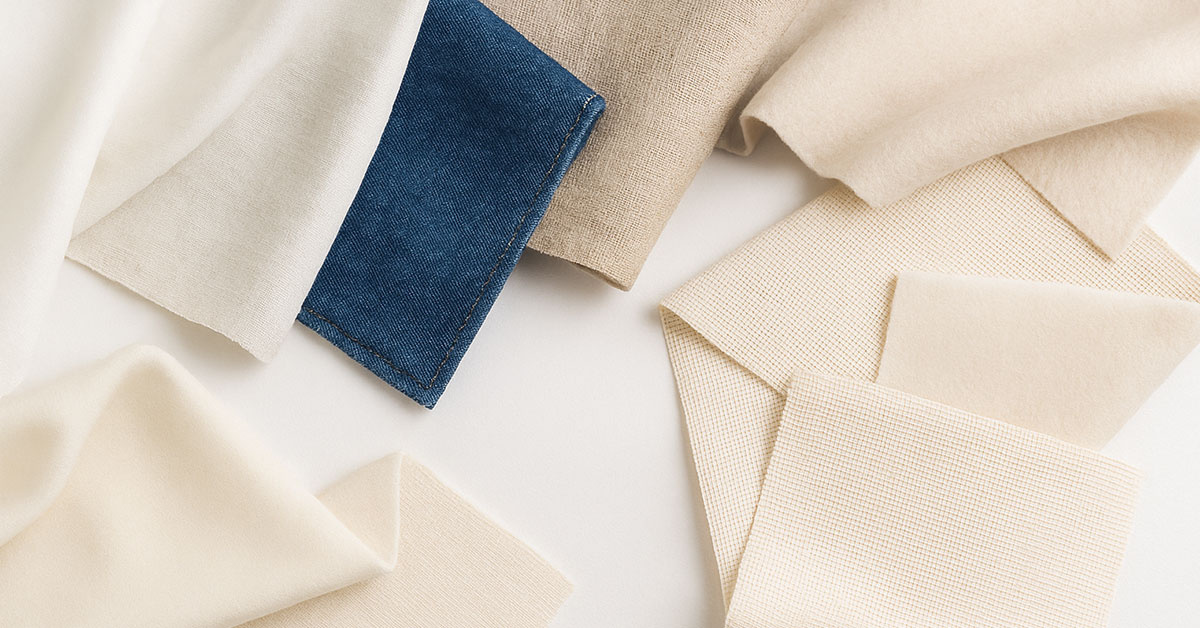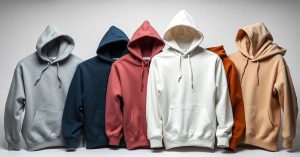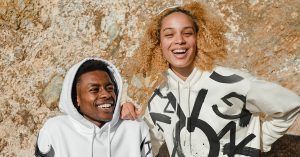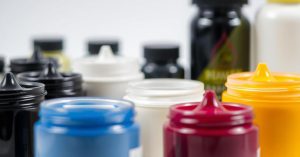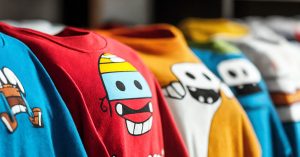Have you ever wondered why some embroidery projects turn out absolutely stunning while others fall flat, leaving you frustrated and disappointed? The secret often lies in one crucial decision that many beginners overlook: choosing the right embroidery fabric. This fundamental choice can make or break your entire embroidery project, determining not only the visual appeal of your finished project but also its durability and professional appearance.
When you select the perfect fabric for embroidery, you’re setting the foundation for beautiful machine-stitched embroidery designs that will stand the test of time. The relationship between your chosen material and the final outcome is more significant than most crafters realize, affecting everything from stitch quality to the longevity of your embroidered pieces.
This comprehensive guide will walk you through the best fabric for embroidery options available, covering seven exceptional materials that consistently deliver outstanding results. From the reliable versatility of woven cotton to the elegant sophistication of linen fabric, and the bold durability of denim, each material brings unique characteristics that can enhance your embroidery work in different ways. Understanding the nuances of fabric weight, weave structure, and durability will empower you to make informed decisions that elevate your embroidery techniques and transform your creative vision into reality.
Key Takeaways
- Choosing the right embroidery fabric is absolutely essential for achieving professional-quality results that you’ll be proud to display or gift
- Woven cotton stands out as a reliable and versatile fabric that works beautifully across various types of embroidery and skill levels
- Linen brings both elegance and durability to your work while providing a sophisticated texture that enhances any design
- Denim offers exceptional sturdiness, making it perfect for creating bold, everyday items that can withstand regular use
- Understanding fabric characteristics like weight and weave can help you prevent common embroidery issues such as puckering and distortion
- Exploring specialized fabrics opens up exciting possibilities for unique and personalized designs that truly stand out
- Thread count and fabric construction play crucial roles in determining embroidery success
Table of Contents
Understanding Fabric Behavior for Machine Embroidery
The way different fabrics behave during the machine embroidery process is absolutely crucial to achieving exceptional results that meet your expectations. When you understand how various materials react to needle penetration, thread tension, and hoop pressure, you can anticipate potential challenges and make adjustments that ensure your embroidery designs come out looking crisp and professional every time.
Different types of embroidery fabrics respond in unique ways during the stitching process, and this behavior directly impacts the final appearance of your work. Several key factors come into play when selecting the ideal material, including fabric weight, weave construction, and stretch characteristics, all of which influence how well various embroidery techniques will perform on your chosen surface.
Medium weight fabrics consistently prove to be the sweet spot for most embroidery projects because they offer an ideal balance of flexibility and stability. This perfect combination allows for crisp, clear design reproduction while providing enough substance to support dense stitch patterns without compromising the fabric’s integrity. Many embroidery experts recommend starting with these fabrics when you’re new to embroidery.
Importance of Weight, Weave, and Stretch
The weight of your embroidery fabric plays a fundamental role in determining how well it will hold stitches and maintain design integrity throughout the embroidery process. Medium weight materials excel at providing the necessary stability to support detailed designs while remaining flexible enough to accommodate intricate stitch work without causing unnecessary stress on either the fabric or your embroidery machine.
Lightweight fabric options, such as delicate chiffon or silk, often lack the structural stability needed for successful machine embroidery, potentially resulting in fabric tears, stitch misalignment, or designs that appear distorted. On the other hand, heavier materials require specialized needles and adjusted machine settings to prevent issues like puckering or uneven stitch formation that can compromise your finished project.
The weave of the fabric significantly impacts the clarity and precision of your embroidered designs, with tightly woven materials typically providing the cleanest stitch definition and minimal fabric movement during the embroidery process. This characteristic becomes particularly important when working on detailed designs that require precise stitch placement and clear outline definition. Aida cloth and evenweave fabric are excellent examples of materials with consistent weave patterns.
Stretchy fabric presents its own unique set of challenges in machine embroidery, as excessive stretch can cause design distortion and make it difficult to achieve consistent results. Materials with minimal stretch provide a stable foundation that allows your embroidery to maintain its intended shape and proportions throughout the stitching process and beyond. When working with stretch materials, always use a stabilizer to maintain proper tension.
Challenges with Heavier and Lighter Fabrics
Working with heavier fabrics requires careful consideration of needle selection, thread tension, and stabilizer choice to achieve optimal results without damaging your material or creating unsightly puckering. These substantial materials, while durable and long-lasting, can present challenges such as uneven stitch formation or difficulty achieving proper thread tension if not handled correctly.
Conversely, lightweight fabric options demand extra attention to stabilization and hooping techniques to prevent tearing, shifting, or distortion during the embroidery process. Understanding how fabric weight, weave structure, and stretch characteristics interact with your machine embroidery setup is essential for consistently achieving the professional-quality results you’re striving for.
|
Fabric Type |
Weight |
Weave |
Stretch |
Embroidery Suitability |
Best Use |
|
Medium-weight Cotton |
Medium |
Woven |
Minimal |
Excellent |
General projects, clothing |
|
Chiffon |
Light |
Woven |
High |
Poor |
Decorative accents only |
|
Denim |
Heavy |
Woven |
Minimal |
Good |
Casual wear, bags |
|
Linen |
Medium |
Woven |
Minimal |
Excellent |
Home decor, formal items |
|
Stretch Jersey |
Light |
Knit |
High |
Fair |
T-shirts, activewear |
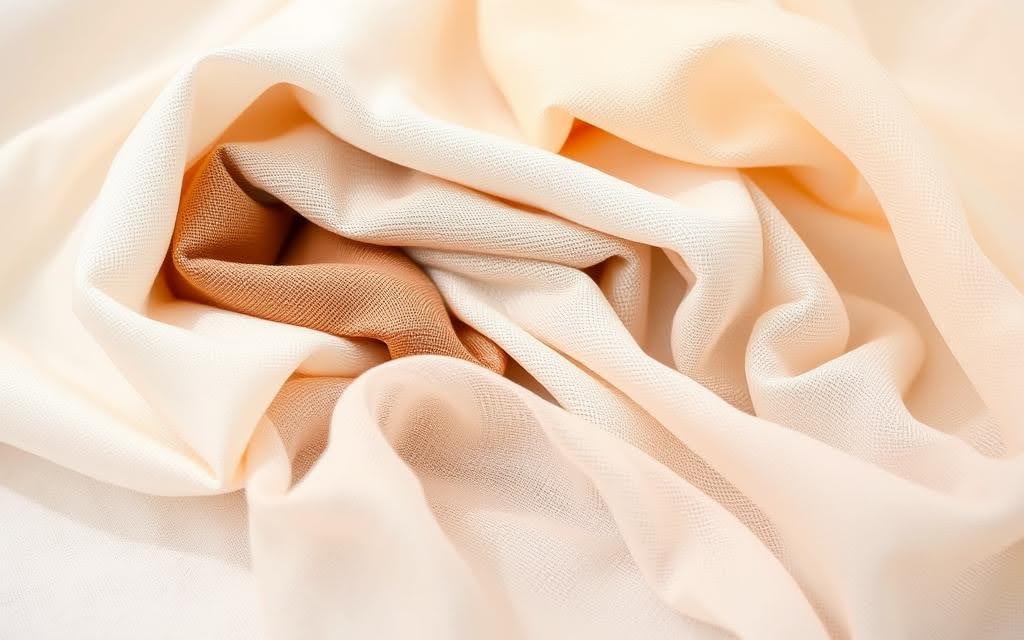
Woven Cotton: A Reliable Choice for Machine Embroidery
Woven cotton has earned its reputation as the go-to choice for embroidery enthusiasts at every skill level, thanks to its impressive combination of practical benefits and consistent performance. This versatile fabric demonstrates remarkable durability under the stress of machine embroidery while remaining surprisingly affordable, making it an ideal option for both beginners who are just starting their embroidery journey and experienced crafters working on large-scale projects.
The inherent strength of cotton fabric allows it to withstand the repeated needle penetrations and thread tension required for complex embroidery work without showing signs of wear or distortion. This durability extends beyond the embroidery process itself, as cotton-based projects maintain their appearance and structural integrity through countless wash cycles and years of use.
Affordability and Durability
One of the most compelling aspects of woven cotton is its exceptional affordability, making it accessible to crafters working within any budget constraint. However, this budget-friendly price point doesn’t come at the expense of quality, as cotton consistently delivers the reliable performance that embroiderers depend on for professional-looking results.
The durable fabric construction of woven cotton ensures that your embroidered pieces will maintain their beauty and functionality over time, even with regular use and washing. This longevity makes cotton an excellent investment for creating items that will be treasured for years to come, from personalized gifts to heirloom-quality home decor pieces.
Versatility for Various Projects
The remarkable versatility of woven cotton becomes apparent when you consider the wide range of weights and styles available, from lightweight quilting cotton perfect for delicate home decor items to heavier canvas weights suitable for sturdy bags and outdoor gear. This extensive variety allows you to choose the best fabric for your specific project requirements without compromising on quality or performance.
Cotton fabric also serves as an excellent learning material for those new to embroidery, as its forgiving nature helps prevent many common beginner mistakes while providing consistent results that build confidence and encourage continued exploration of different embroidery techniques.
Linen: Elevating Your Embroidery Projects
Linen fabric represents the pinnacle of elegance in the embroidery world, offering a sophisticated aesthetic that instantly elevates any project from ordinary to extraordinary. The natural characteristics of linen, including its distinctive texture and beautiful drape, create a luxurious foundation that enhances the visual impact of your embroidered designs while maintaining the durability necessary for long-lasting beauty.
The unique texture of linen, with its characteristic subtle slubs and natural variations, adds depth and visual interest to embroidered pieces that simply cannot be achieved with other materials. This natural texture creates a beautiful contrast with smooth embroidery threads, making each stitch appear more defined and visually striking.
Natural Drape and Texture
The exceptional natural drape of linen fabric ensures that garments and home decor items hang beautifully, creating an elegant silhouette that enhances the overall appearance of your embroidered pieces. This graceful drape, combined with linen’s distinctive texture, highlights each individual stitch in your embroidery work, creating a sophisticated interplay between the natural fabric characteristics and your carefully crafted designs.
As linen ages gracefully through use and washing, it develops an increasingly soft and appealing texture that only adds to its charm and desirability. This aging process, rather than detracting from the fabric’s appearance, actually enhances its beauty and makes it even more pleasant to work with and wear.
Durability for Lasting Designs
Despite its elegant appearance, linen proves to be remarkably durable and well-suited to withstand frequent use and regular washing without losing the vibrancy or clarity of your embroidered designs. This exceptional durability makes linen an ideal choice for creating pieces that are not only beautiful but also practical and long-lasting.
When you choose linen for your embroidery projects, you’re investing in materials that will maintain their beauty and functionality for years to come, making them perfect for creating timeless pieces that can be passed down through generations as treasured family heirlooms.
Denim: The Sturdy Fabric for Bold Designs
Denim stands out as the ultimate choice for embroiderers who want to create bold, eye-catching designs that can withstand the rigors of everyday use while maintaining their visual impact. This incredibly sturdy material provides an ideal canvas for machine embroidery work, especially when you’re aiming for designs that need to endure frequent wear and washing without losing their crisp appearance or structural integrity.
The substantial weight and tight weave of denim create a stable foundation that prevents design distortion and maintains excellent stitch definition, making it particularly well-suited for larger, more complex embroidery patterns that might overwhelm lighter fabrics.
Strength and Stability in Machine Embroidery
The exceptional strength of denim fabric makes it an outstanding choice for machine embroidery applications where stability and precision are paramount. The thick, tightly woven construction provides excellent resistance to warping and distortion during the embroidery process, ensuring that your designs maintain their intended shape and proportions from start to finish.
This durable fabric comes in a wide variety of washes and colors, from classic indigo blue to contemporary black, white, and colored options, providing versatility that allows you to select the perfect backdrop for your specific design aesthetic and project requirements.
Great for Everyday Items
The casual, comfortable nature of denim makes it perfectly suited for creating embroidered everyday items that combine style with practicality. Whether you’re personalizing jackets, designing custom bags, or creating unique hats, denim provides the durability necessary for items that will see regular use while maintaining their attractive appearance.
Machine embroidery on denim can transform simple, everyday items into personalized statement pieces that reflect individual style and creativity while providing the functionality and durability that modern lifestyles demand.
|
Feature |
Denim |
Cotton |
Linen |
Specialized Fabrics |
|
Durability |
Excellent |
Good |
Excellent |
Varies |
|
Stability for Stitching |
Excellent |
Good |
Good |
Moderate |
|
Casual Style |
High |
Medium |
Low |
Varies |
|
Color Variety |
Good |
Excellent |
Limited |
Varies |
|
Beginner Friendly |
Good |
Excellent |
Good |
Challenging |
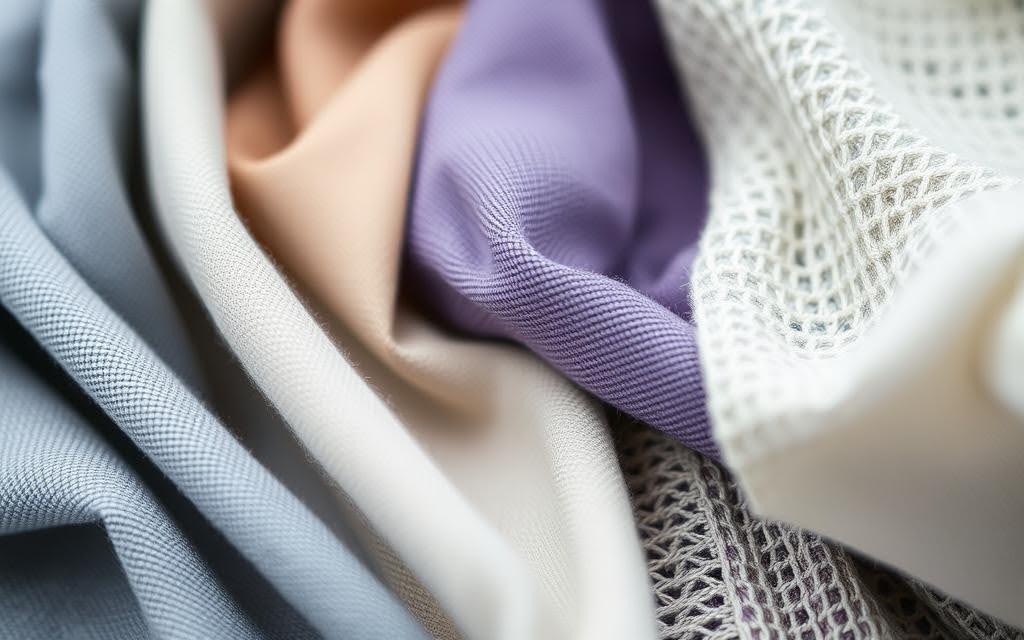
Embroidery Fabric: The Best Types for Precision Stitching
Selecting the right fabric for precision stitching represents one of the most critical decisions in achieving professional-quality embroidery results that showcase your skills and attention to detail. The fabric you choose serves as the foundation upon which your entire design is built, and this choice directly influences the clarity, definition, and overall success of your finished project.
When working on designs that require exceptional precision and fine detail work, the characteristics of your chosen embroidery fabric become even more important, as any instability or inappropriate texture can compromise the clean lines and sharp definition that precision work demands.
Why Fabric Type Matters
The specific fabric type you select has a profound impact on the overall quality and appearance of your embroidery project, influencing everything from stitch clarity to design longevity. Fabrics with tight, stable weaves provide the solid foundation necessary for achieving sharp, well-defined stitches that maintain their appearance over time, while loose or heavily textured materials can cause designs to appear uneven or distorted.
Understanding how different fabrics interact with various thread types and embroidery techniques is essential for achieving the perfect harmony between material and design that creates truly exceptional results.
Minimum Stretch for Flawless Results
Fabrics with minimal stretch characteristics consistently produce the best results for precision stitching applications, as they prevent the design distortion and stitch misalignment that can occur with more elastic materials. Stretchy fabrics can cause embroidered designs to become blurred or shifted, making it extremely difficult to achieve the clean, precise appearance that quality embroidery work requires.
Firm, stable fabrics effectively prevent common issues such as puckering, shifting, and thread bunching, ensuring that each individual stitch maintains its intended position and contributes to the overall clarity and precision of your completed design.
Specialized Fabrics: Exploring Unique Options
Beyond the traditional fabric choices commonly used in embroidery, there exists a fascinating world of specialized fabrics that offer unique creative opportunities and can significantly enhance the visual impact and tactile appeal of your machine stitching projects. These alternative materials, including felt, fleece, terry cloth, and velvet, provide exciting possibilities for crafters looking to explore new textures and create truly distinctive pieces.
Felt stands out among these specialized options due to its unique non-fraying properties and excellent shape retention, making it ideal for creating dimensional effects and layered designs that would be difficult or impossible to achieve with traditional woven fabrics.
Fleece brings warmth and incredible softness to embroidered projects, making it perfect for creating cozy gifts and comfortable home decor items that invite touch and provide comfort. However, working with these specialized fabrics often requires modified techniques, including the use of appropriate stabilizers and careful attention to hooping methods to achieve optimal results.
Exploring these unique material options opens up an entirely new world of creative possibilities in embroidery, with each fabric type offering its own distinctive characteristics and aesthetic appeal. This diversity allows crafters to express their creativity in countless ways while encouraging designers to think beyond conventional boundaries and explore innovative approaches to their embroidery work. Whether you’re creating personalized garments like custom embroidered shirts or experimenting with home decor pieces, understanding these specialized materials will elevate your projects to new heights.
The key to success with specialized fabrics lies in understanding their unique properties and adjusting your techniques accordingly, ensuring that you can take full advantage of their special characteristics while avoiding potential pitfalls that might compromise your embroidery project.

